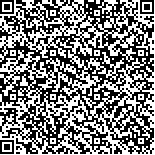下载中心
优秀审稿专家
优秀论文
相关链接
摘要

河道流量的获取是水资源开发及生态保护的基础。但在缺少资料地区,如何方便、准确的获取流量资料仍然是一个难题。随着无人机航空摄影测量的发展,为解决该问题提供了新的数据源和思路。本研究利用无人机航空摄影获取的高精度的DOM(Digital Orthophoto Map)与DSM (Digital Surface Model),结合经典曼宁公式河道流量算法,深度挖掘航测数据记录的地表高程信息,提出了一种河道流量估算的新方法。研究计算了中国西北典型无资料区准格尔盆地的卡赞营、博尔通古、安集海、大河沿子和二叉河等5个典型断面的流量。与实测流量对比分析得出如下结论:5个计算断面流量平均相对误差为10.74%,最小相对误差为1.43%,均方根误差RMSE(Root Mean Squared Error)为4.82 m3/s,平均百分比误差MPE(Mean Percentage Error)为0.065,证明了将无人机数据与曼宁公式相结合的方法在径流估算上的可行性。本研究发挥了无人机航空摄影快速、便捷、高精度获取河道基础信息的优势,论证了无人机航空摄影测量数据与经典流量公式相结合的可行性,为缺少资料地区径流资料的获取提供新思路。研究结果为缺少资料区水资源开发和生态保护提供了重要数据,同时为复杂水文模式的简化处理在缺少资料地区模拟计算提供了重要的验证数据。
River discharge is the basis for water resources and ecological protection, and it is an essential part of the hydrological cycle. However, some large areas in the world lack hydrological data. How to obtain river hydrological data conveniently and accurately remains a hot topic in the prediction of ungauged basins, especially in small and medium rivers. Solving the problem of data acquisition in areas lacking traditional hydrological data is beneficial for the management of water resources and rapid prediction of water disasters. Remote sensing technology, which is a non-contact data acquisition method, has been applied in many fields. This technology breaks the limits of space in acquiring river discharge, especially in areas where obtaining basic data is difficult, and has become a preferred method of data acquisition.Therefore, this study tries to take advantage of low-altitude remote sensing in obtaining terrain data. The study combines high-density terrain data with classical Manning-Strickler formula to estimate the river discharge. This study is based on representative rivers in the Junggar Basin, which is the second largest inland basin in China. The Kazanying section, Bortonggu section, Anji Sea section, Daheiyanzi section, and Rocha River section are selected as study sections. Combined with the Manning-Strickler formula, Digital Orthophoto Map (DOM) and Digital Surface Model (DSM) image data obtained by an Unmanned Aerial Vehicle (UAV) are used to calculate the theoretical river discharge. The Manning-Strickler formula needs four parameters to calculate discharge: cross-section area, hydraulic radius, hydraulic gradient, and roughness. Cross-section area and hydraulic radius are extracted in cross-section, which is combined with DSM and measured data; hydraulic radius reflects the slope of the river, which is calculated with DSM and DOM in Arc GIS; roughness, an empirical value that measures the level of obstruction of water flow in the river bed and embankment, is obtained by using DOM. On the basis of the values of these parameters, we calculated the discharge in Kazanying section, Bortonggu section, Anji Sea section, Daheiyanzi section, and Rocha River section. Their calculated values are 28.73 m3/s, 46.29 m3/s, 104.84 m3/s, 19.77 m3/s, and 6.83 m3/s, respectively. To verify the effectiveness and accuracy of the low-altitude remote sensing method in river flow calculation, we used traditional measurements to record the measured values of river discharge. This study selected 20% of the allowable error as the standard of Relative Accuracy (RA) and used the measured value to evaluate the calculated value. Root Mean Squared Error (RMSE) and Mean Percentage Error (MPE) are important methods of evaluating accuracy, which are used as criteria for evaluating overall reliability.According to the established evaluation method, the results in the five sections show that the average error is 10.74%, the maximum value is 28.48%,the minimum value is 1.43%, the RMSE is 4.82 m3/s, and the MPE is 0.065. The reason why the maximum relative error occurs in the Bortonggu section is because the value of roughness is too small. The results of the accuracy analysis indicate that the method used in this study is reasonable and has a well applicability in the study area. Moreover, the results prove that the classic Manning-Strickler formula can be combined with low-altitude remote sensing data.To resolve the problem of river discharge monitoring in ungauged areas, this study developed a new method that integrates classic river discharge algorithms with low-altitude remote sensing. The advantages of UAV are fully exploited in this study, and the use of UAV complements the research gap in the acquisition of small and medium-sized river discharge through remote sensing data. Research results have significant values for the application of flow simulation methods in ungauged regions and also provide a new solution for rapid and convenient collection of hydrological information. This study has unique advantages for water resources management and water disaster monitoring in key areas.

